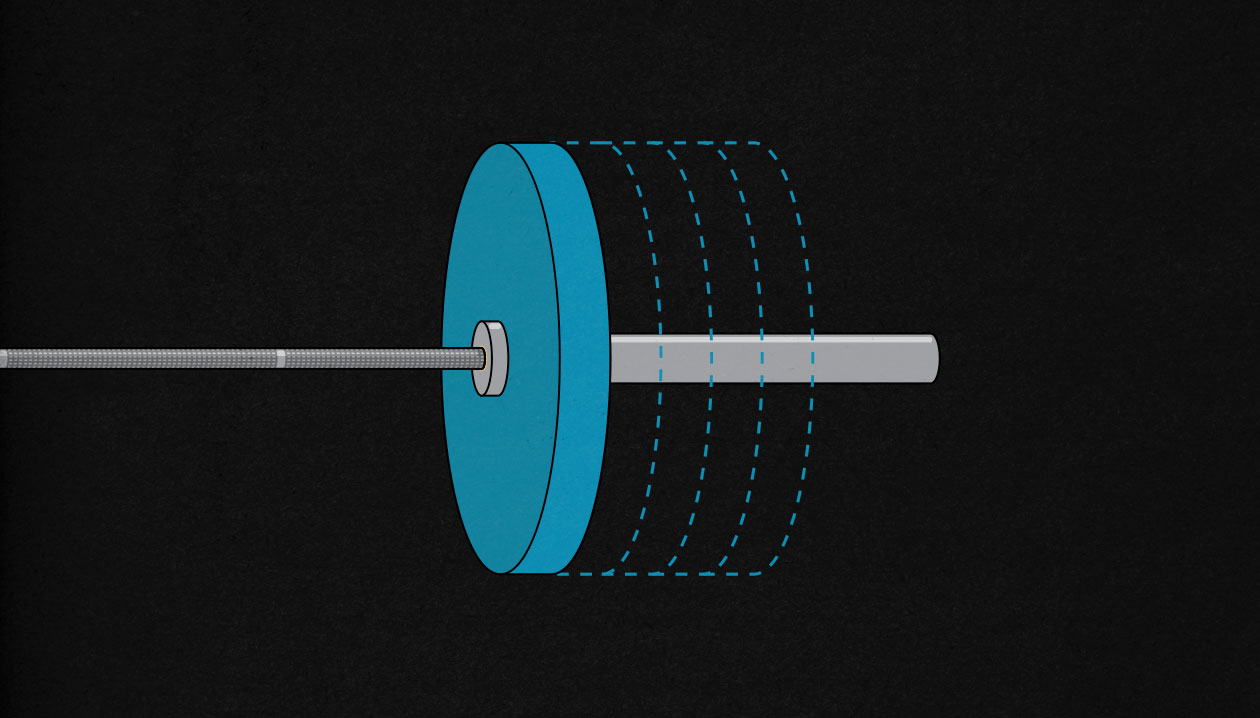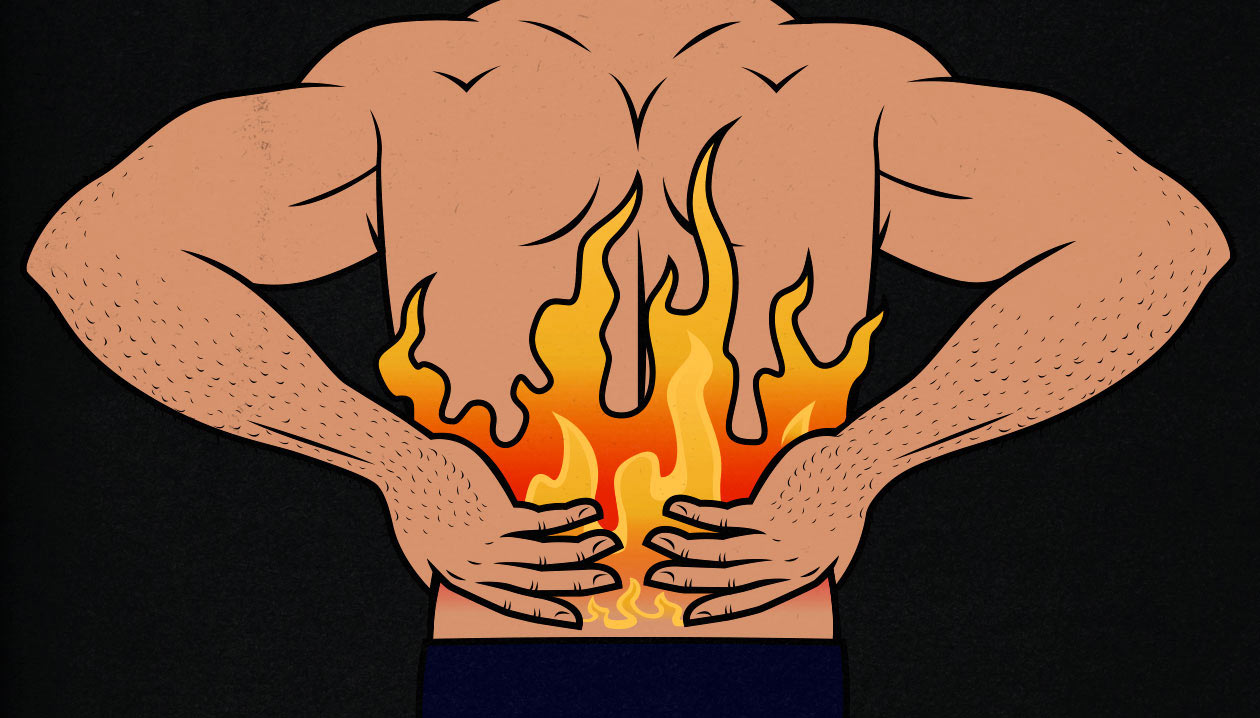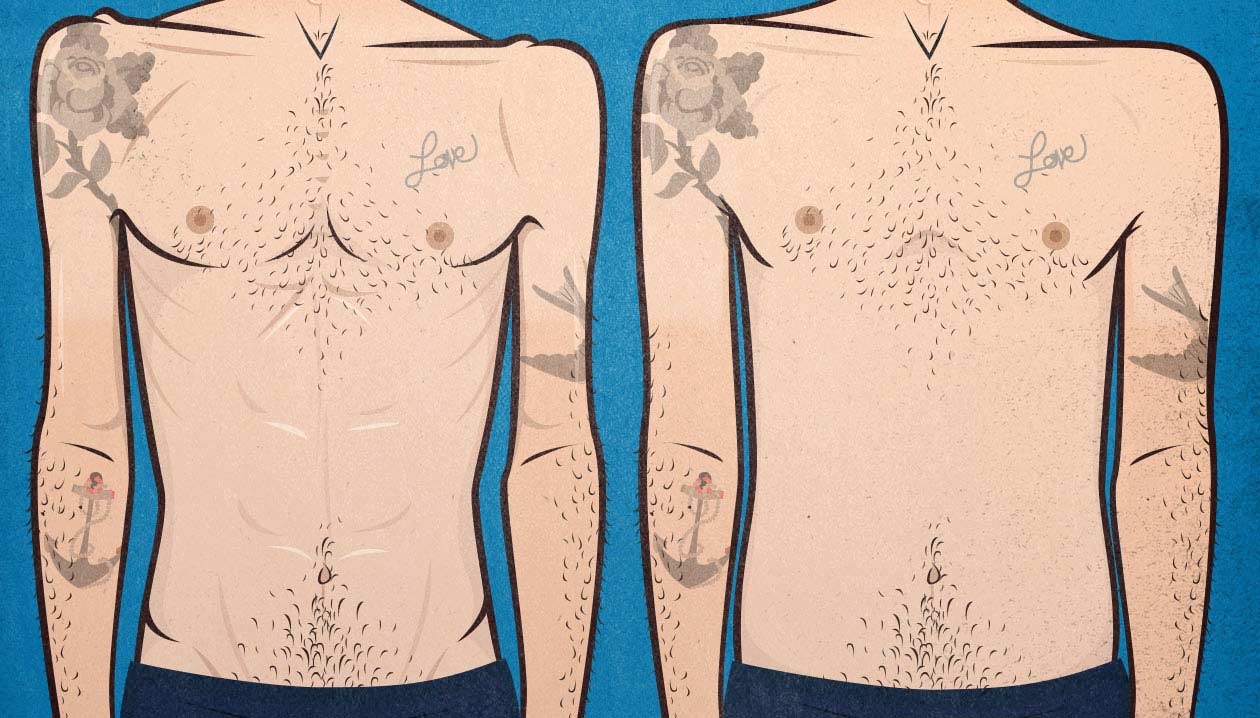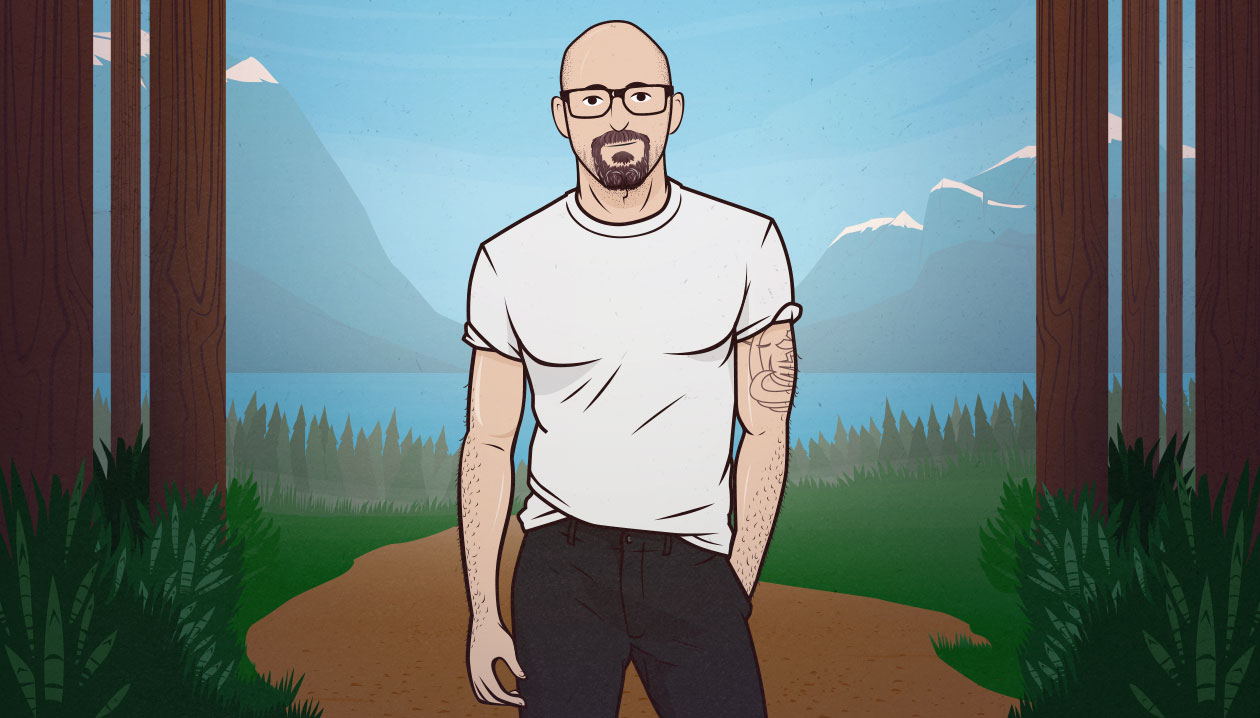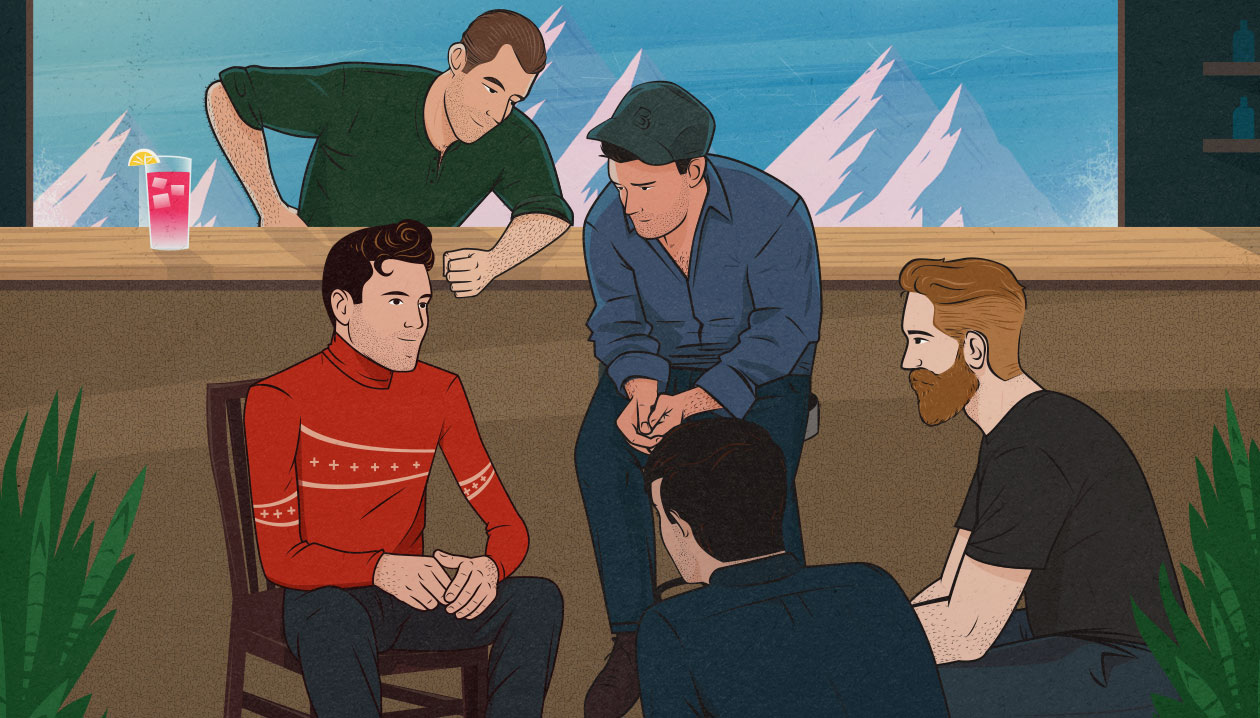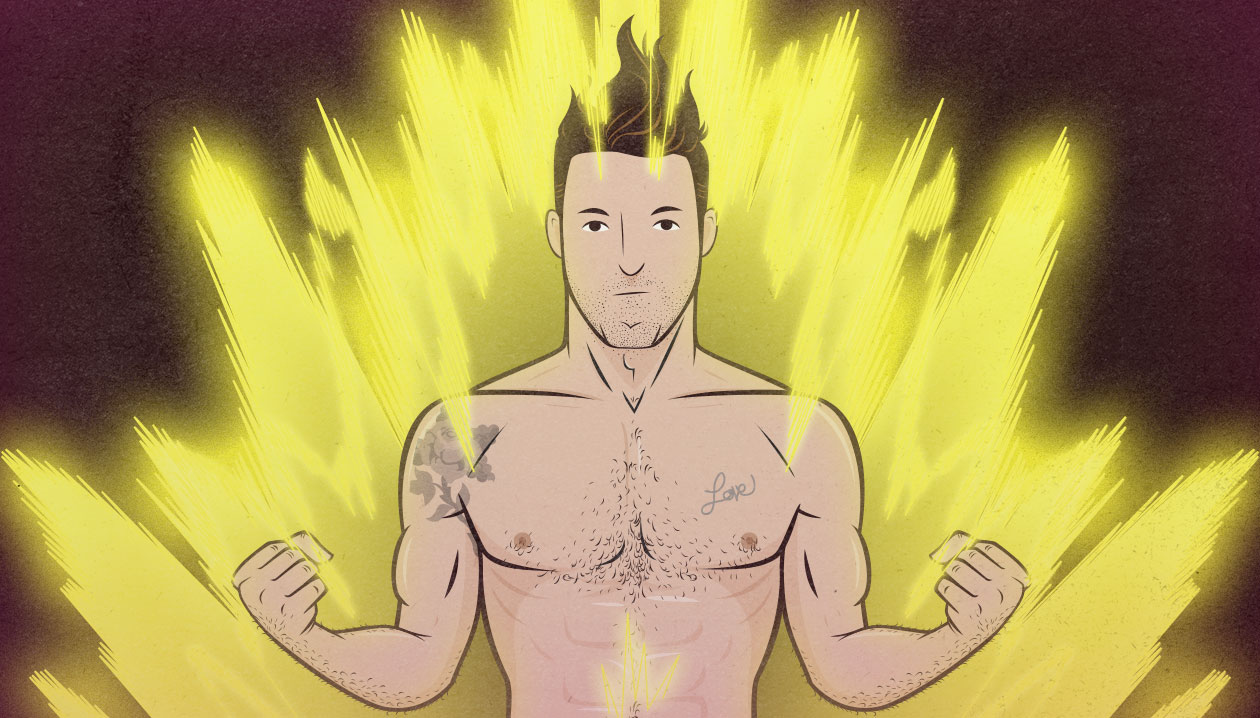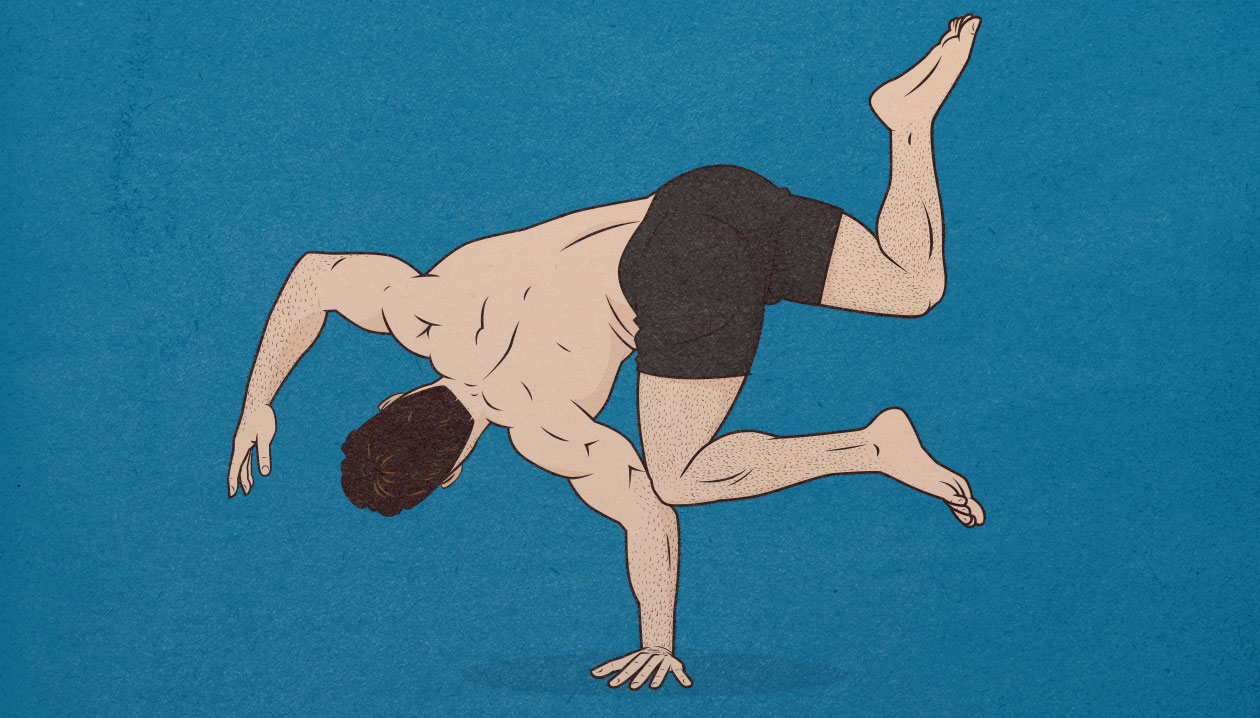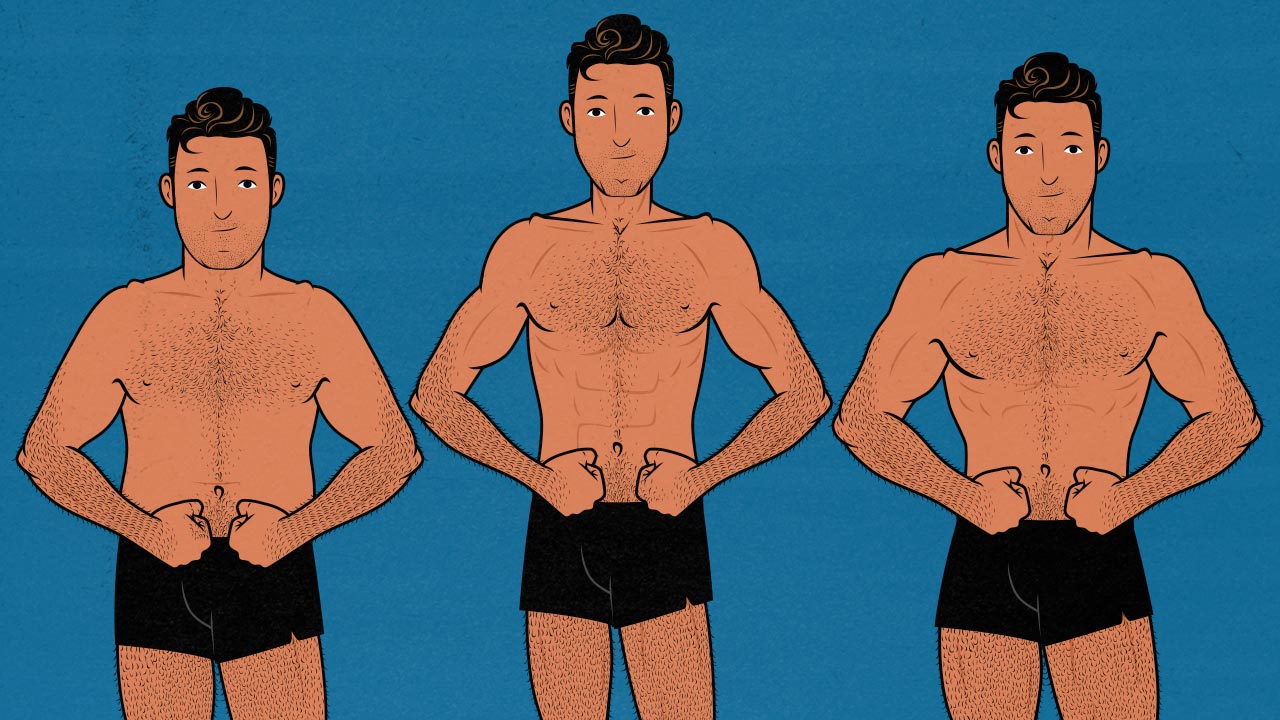Articles
The Growth Mindset
One of the biggest obstacles to transform our bodies might not be in our genes. It’s not about being skinny. It’s not about being ectomorphs. Many times, what holds us back are our beliefs. We want to change our bodies, but… how can we get started on a new journey when—deep inside—we believe we won’t make it?
We say we want to gain weight and put on muscle, but part of us holds back. Otherwise, we should have already solved this, right? If you are still struggling with being skinny, chances are you need to take a look at your mindset.
In fact, if you can adopt the right mindset, it won’t just change your psychology, it will also change your physiology. It will improve the rate that you build muscle through a process akin to the placebo effect, where simply believing that you can grow will physically increase the rate that you’re able to gain muscle.
Muscle Size and Strength Standards for Ectomorphs
How much muscle and strength can an “ectomorph” gain? Plenty of research has looked into rates of muscle and strength gain, but what if you’re a naturally skinny guy? Are there different strength standards for us?
Skinny guys do start off with less muscle mass, but what effect does that have on how quickly we can grow? Do we have an extended period of newbie gains, allowing us to gain muscle and strength more quickly? Or does having less muscle mass indicate that our genetics are poor, causing us to build muscle more slowly?
We have thinner bones and narrower frames, and we tend to start off weaker. Does that limit how strong we can become?
In this article, we’ll go over two main questions from an ectomorph’s perspective:
- How much muscle can an ectomorph gain in his first year? Most guys can expect to gain around twenty pounds of muscle during their first year of lifting weights. How does that change for an ectomorph?
- How strong can an ectomorph get after a year of lifting weights? With a good workout routine, most guys are able to bench press 225 pounds (100kg), squat 315 pounds (140kg), and deadlift 405 pounds (180kg). Are these numbers realistic for ectomorphs?
- What’s an ectomorph’s lifetime muscular genetic potential? If we lift for a lifetime, how big can we hope to get?
- How strong can an ectomorph get with a lifetime of serious training? If we develop our muscles to their full potential, how strong can we hope to become?
Let’s dive in.
Read MoreDOMS: Is Muscle Soreness A Sign of Muscle Growth?
When I first started lifting weights, I was absolutely crippled by muscle soreness. I would wince when sitting in chairs, struggle to lift my knees high enough to climb stairs, and barely be able to get glasses from the cupboard. I loved it. I was sick and tired of being skinny, and I thought muscle soreness was a sign that my muscles were growing.
A couple of months later, my soreness faded away to almost nothing. I could sit down in a chair without everyone in the room grimacing. I could even hold myself upright in it. I started to feel less like a burning puddle of oil, more like a human being. It was awful.
My gains had started to slow down as well, and I was convinced that my waning muscle growth was connected to my fading muscle soreness. Was my fading muscle soreness causing my plateau?
Muscle soreness is intimately connected to muscle growth, but most have no idea how it works, making the process more confusing. So in this article, let’s go over a few of the more common muscle soreness questions that we get:
- What’s the link between muscle soreness and muscle growth?
- How much muscle soreness is good?
- Should you work out if you still feel sore from the last workout?
- Can muscle soreness interfere with muscle growth?
- What can you do to reduce muscle soreness?
- Can you build muscle without getting sore?
- What if a muscle never gets sore?
- What if your joints or tendons get sore?
- What if your lower back gets sore?
The Skinny Guy’s Guide to Body-Fat Percentage
As a skinny guy, it can be hard to figure out what your body-fat percentage is. Imagine the average man. A DEXA scan measures him at 24% body fat. Then he sits in the BodPod, which puts him at 26%. A bit of a discrepancy, but he can be reasonably confident he’s between 24–26%.
Now you walk in, and DEXA puts you at 9%. Not only are you lean enough to bulk aggressively, but you’re also leaner than most professional athletes. You may even want to gain a bit of fat. But when you step into the BodPod, it measures you at 22% body fat. That’s a bit high. You might want to lose some fat.
You’ve spent a few hundred dollars getting the two most accurate tests, and you don’t even know if you have too much or too little fat. The typical margin of error is something like 5% body fat in either direction (article). That means if you get a reading of 20%, you’re probably between 15–25% body fat. That isn’t always the case, though. With skinny guys, DEXA and BodPod can be off by up to 13%!
So in this article, we cover why your body-fat percentage matters, how to measure it properly, and then run through some real-life examples (with pictures).
Read MoreThe Best Clothes for Skinny Guys
Being a man is about being a good person, and part of being a good person is knowing how to fit into society. Demonstrating that social savvy will make you more attractive to women, earn you more respect with other men, and make frailer people feel safer around your strength instead of threatened by it.
As you gain more strength, that last point becomes more important.
There are a few things we can do. Being polite, knowing when to smile, improving our posture, and knowing what to wear.
Even by just fixing up our style, we can start living better almost instantly.
But for us ectomorphs, things are not quite so simple. We’ve got a rarer body type, and it can be hard to find clothes that fit and flatter us.
Then as we build muscle, we look better in clothes, yes, but new challenges are introduced. Having a butt means switching to a whole different cut of jeans. If you don’t, you’ll blow out the crotch.
Building up bigger shoulder muscles will bring you up a shirt size, but that bigger shirt will be enormous around your still-slim waist.
So now that you’ve bulked up and you need to buy new clothes anyway, let’s see if we can help you do it right.
Read MoreHow I Overcame My Skinny Body-Image Issues & How You Can Too
We’ve got a new guest post for you guys. This one from a naturally skinny science communicator who reads a lot. You might think some of his points are controversial, and we’d love to hear what you think. We think his perspective on dealing with body image issues as a skinny guy is incredibly thought provoking in the best way. Without further ado, Will Chou:
Recently, I met with some old friends for a reunion lunch. As we walked out of the restaurant, the conversation turned to what I looked like when I was young. Two of the guys mentioned that I was not just skinny: I was bony and scrawny. One of them even emphasized it with his tone like it was a huge deal.
They weren’t being mean; they were just giving me some constructive honesty. Having said that, I was still very surprised because I didn’t think I was that weak. But it turns out, that’s how they viewed me.
For 80% of my life, I have found myself in frequent situations where I was left out. I had focused on school and struggled with any weight training programs, so I was as skinny as they get.
The worst parts of my day was lunch. My school had a huge, noisy cafeteria with hundreds of people in it. And as you got to higher grade levels, you got to sit in more exclusive areas. The seniors had their own VIP area with its own curtain. But when I was a senior, I still sat alone in the freshmen section.
Sitting there alone for half an hour while everyone around you chatted away creates a constant reminder of isolation. I felt horrible because every few seconds, I was reminded that I was left out. You can’t help but wonder why. Was it because I was Asian? Socially unskilled? Skinny?
If you have ever felt insecure or excluded, you are not alone. Body image is a constant problem in modern society.
But my story doesn’t end there. Your past doesn’t have to destroy your future. Nowadays, I am healthier physically and mentally than I have ever been. You can become secure with yourself no matter where you are in your progression. You can and should change your self-esteem so that you stay resilient no matter how you look. You can and must change your perceptions about the world so that you develop good mental health for your own success in life.
I’m going to share with you some cool science-backed advice on how to have badass self-esteem. First, let’s tackle a big myth about “looks being superficial”…
I Know Everything About Building Muscle—I Just Haven’t Done It Yet
Couple quick questions.
Are you satisfied with how much muscle you’ve built?
If not… do you know what to do? I mean the basics: Eat 1g of protein per pound bodyweight, get into a calorie surplus, lift weights, and sleep. That kind of thing. Know them inside and out? Rad.
But if you know the basics and you’re not satisfied with what you’ve built so far, what’s going on?
How is it possible to not be where you want to be when you know everything?
I’m not asking these questions to be mean, or a downer. I’m asking because I really want to see you reach your potential.
I’m asking because I want to see if I can wake you up. Is it possible that there’s a gap between intellectual knowing something and actually doing it?
The Skinny Guy’s Guide to Natural Testosterone Production
This is a guest post written by Dr. Robin Bhavsar, a physician with a specialization in urology (the field of medicine concerned with testosterone). He works at St. Joseph Health. You can see his credentials here.
After bulking up with our Bony to Beastly Program, he wrote a guide in our coaching community that became immensely popular with our members. He also answered many of their questions, including ones like:
- Does being skinny mean I have low testosterone?
- Am I skinny-fat because I have low testosterone?
- How can I increase my natural testosterone production?
In this article, Dr. Bhavsar will explain everything a skinny guy should know about their own natural testosterone production.
Read the ArticleA Conversation On Aesthetics and Fitness
In this article we’re going to do something a little bit different. The idea came from one of our members. He started off by saying something fairly controversial. Then, as other members prodded him, instead of backing away from it, he doubled down. And I think his arguments are pretty compelling.
First, let’s set the stage. In our articles about attractiveness, we make the argument that attractiveness is visible health. Being very attractive just takes that one step further. Instead of looking healthy, you’d have to look healthy in a way that truly stands out—you’d have to be conspicuously healthy.
For an overweight person, the best way to build a more attractive physique is to become visibly healthier by losing fat. For us skinny guys, the best way to become more attractive is usually to build muscle. There are lots of objective goals you could set: bringing your BMI to 23 with abs, becoming 50% heavier than your date/girlfriend/fiancée/wife, or building your biceps up to the size of your neck, to name a few.
At first, progress can be very quick. If you’ve read our newbie gains article, then you understand exactly how quick. The interesting thing is that the 80–20 principle applies here. What I mean is that with a small amount of time investment—just a couple months—a skinny guy can usually get to the point where he looks healthy and fit. He’ll look attractive.
Not alarmingly attractive, but attractive.
At that point, progress will slow, and it can take a lot more time and effort to get to that next, very attractive level. After all, looking healthy is one thing, but looking so healthy that people go, “Wow, that dude looks healthy!” is a whole other thing.
But physical attractiveness isn’t the only way you can boost your attractiveness. It’s not even the only physical way that you can boost your attractiveness.
That’s where Rick J comes in.
The Male Body Types: Ectomorph, Endomorph, Mesomorph
In bodybuilding and fitness communities, people commonly use the terms endomorph, mesomorph, and ectomorph when talking about male body types. Endomorphs are purportedly stockier and chubbier, mesomorphs are said to be broader and more muscular, and ectomorphs are supposedly thinner and leaner.
Or that’s what people say, anyway. Men do have varying heights and bone structures, and have different propensities for being overweight or underweight, but do these traits really combine together to form three distinct body types? Is it correct to call a naturally skinny guy an ectomorph?
And even if we do use these slang terms to sort people into different body types, do the different body types benefit from different diets and workouts? For example, is there such a thing as an ectomorph workout or an ectomorph bulking diet? Or do all body types benefit from the same workouts, diets, and lifestyles?
Read More

